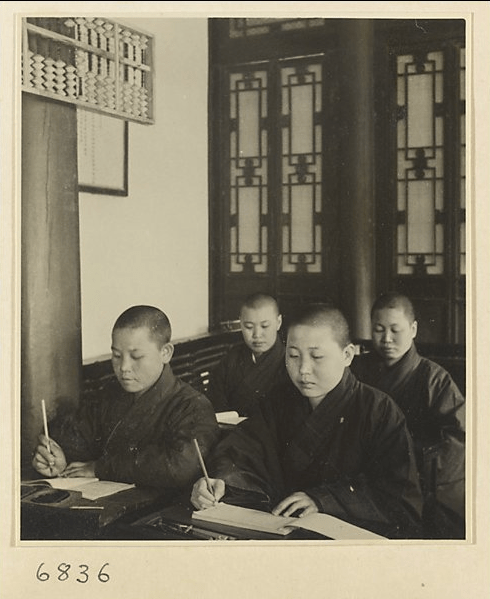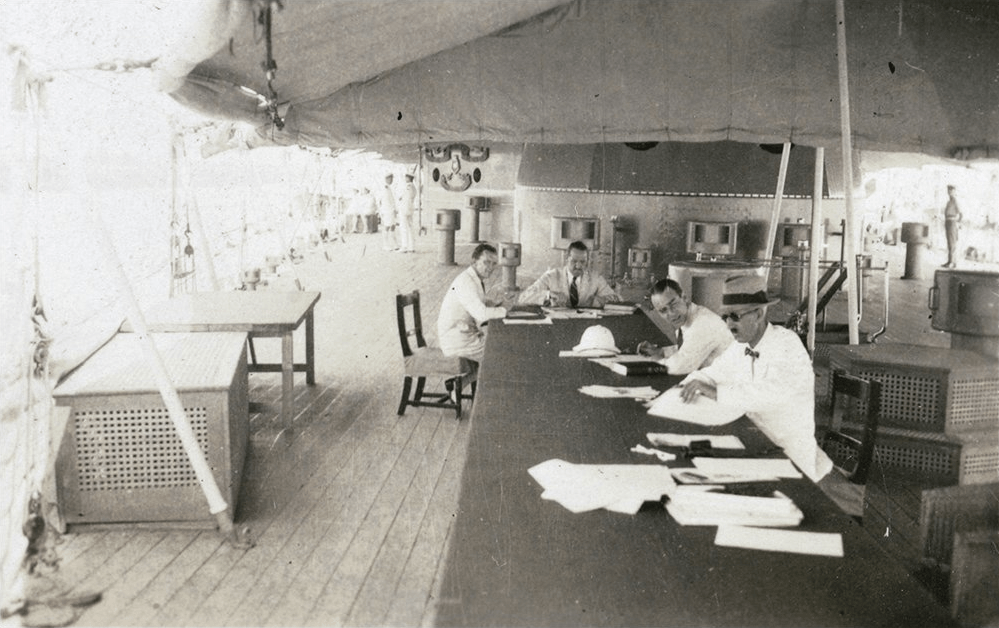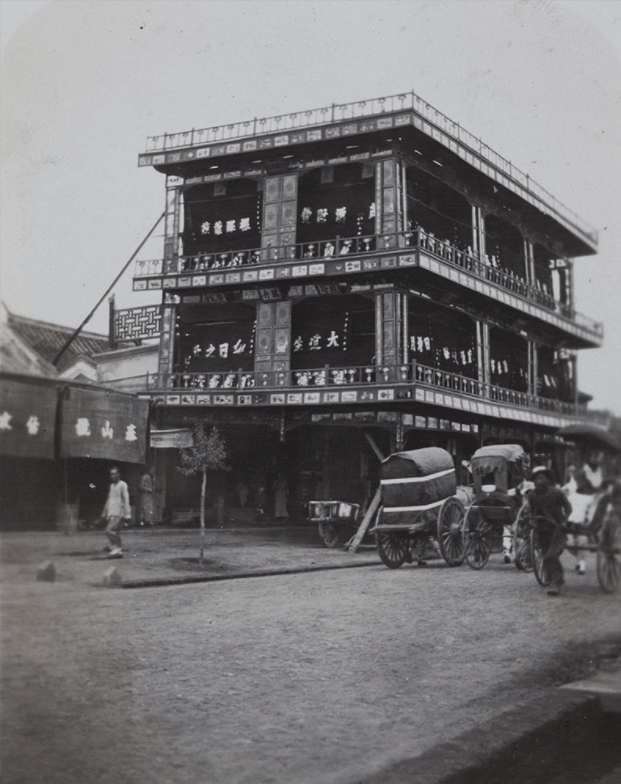
Some of our writers? Nuns? Nuns: at Cuifeng Si, Beijing. Photograph by Hedda Morrison, © President and Fellows of Harvard College. Hedda Morrison Collection, HPC ref Hv11-46.
This blog has hosted a fair few guest posts recently, and we have been writing our own as well. Just in case you missed them I thought I might recap a little, and flag up the fact that in the coming days we have Sarah Yu on flies and hygiene, and Anne Gerritsen on china, labour, and dust.
This blog aims to let you know more about what’s new on Historical Photographs of China, but also what’s old there. Frankly, we sometimes rather lose sight of what gems are tucked away, and after all we have 22,000 digitised gems in the platform for you: open access, and available for non-commercial reuse under a Creative Commons licence. Jamie Carstairs, Project Manager, and camera supremo, probably hasn’t forgotten what’s there, as his trained eye was focused on copying most of our holdings. Nor has metadata maestro Shannon Smith, who has pasted in suitable terms and captions for very many of these to help people find them. But I have.
It’s quite wonderful when new eyes are brought to bear on our holdings. Sometimes we have posts from scholars who have already used our images in books and articles, but recently we have offered authors a chance to introduce the theme of just-published books to what we have. So Jay Carter drew material together on racing in Shanghai, Benno Weiner on Tibet’s eastern Amdo region in the first decade of the PRC, Brian Dott on the history of the Chile pepper in China, Nick Kitto on his photobook survey of surviving treaty port architecture, and Gina Tam confounded us by finding the perfect hook for an essay on dialect and nationalism in China. But hey, you can still listen to a 30 minute BBC radio programme about our photographic archive. We transcend media.
We have also been working from home since 23 March, and I think most of our bloggers have been posting from home as well, although possibly not working from such congenial, onboard surroundings as these British diplomats did. Or perhaps such sights are indeed hidden behind the Zoom backgrounds and anonymity of online interaction.
What and who else? Xavier Ortells-Nicolau provided a powerful essay on the erasure of Spain from the history of treaty port China, while Andrew Hillier, project associate, and prolific blogger, has provided posts on our project to locate and digitise holdings in British Army Regimental Museums, and on his family’s long and deep entanglement in China here (with Buick) and here (with Amanuensis), and most recently on internment in Weihsien. Cole Roskam nosed around Trinity Church in Shanghai. Helena Lopes, shortly to take up a Leverhulme Research Fellowship with Bristol, has been working to help bring our Hong Kong collections online, such as the Hagger collection, and has blogged about some of these here (a doctor) and here (a queen), on China in an era of global war, and the sinking of the China Navigation Company steamer, SS Chusan.
Chris Courtney blogged on Wuhan and cholera, Yang Chan on Wuhan’s resilience in a time of crisis, Jamie introduced the John Gurney Fry Collection, and the work (his, with others) to commemorate John Thomson with a Bronze Plaque. All this since February.
Get reading! And get writing: we are open for business. Please do get in touch if you would like to propose a post. After all, look at the wonderful company you’ll join. There’s no point our placing these gems online if you don’t use them, and we would love to see what you can do with them.


